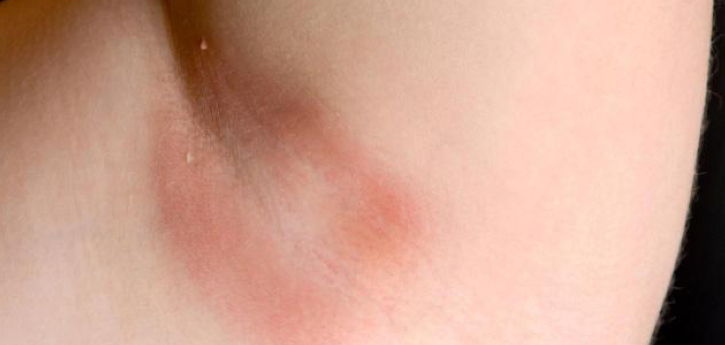
FUNGI
Fungi are single or multi-cellular organisms that cause skin infections. Fungi can be true pathogens, which causes infection in healthy people, or opportunistic pathogens, which causes infection in immune-compromised patients. A common type of fungus is yeast, which is already present in the human body, but when the level increases, it can result in infection. Dermatophytes are fungal organisms that grow on the human body and infect the top layer of skin as well as nails or hair. There are different types of fungal infections, and each can appear in different areas of the body. Some symptoms include rashes, itchy blisters, cracking of the skin and skin irritation.

TYPES OF FUNGUS
Tinea Pedis (“Athletes Foot”)
Tinea pedis affects over 10% of the United State’s population each year, and 75% will contract it at some point in their lives. The fungus appears in between toes, characterized by skin becoming white, moist, and easily rubbed off. The tops may be red, dry and flaky. Tinea pedis generally occurs with hot, moist conditions, or if shoes are worn often and without socks.
Tnnea Cruris (“Jock Itch”)
As with tinea pedis, moist, sweaty conditions around the groin, combined with poor circulation from tight clothing leads to fungal infection in this area. Intense itching and burning are the usual symptoms. Redness, flaking, and peeling on the inner thighs and scrotum may also occur.
Tinea Corpora (Ringworm)
Tinea corpora are caused by a microscopic fungus, not a worm as the name implies. The infected area spreads out slowly from the central point, creating a slightly raised, red ring surrounding a less red, flaky, itchy area. This “ring” gives the infection its nickname. Tinea corpora can spread throughout the body and may appear in multiple areas at once.
Candidiasis
This infection is characterized by brown-red itchy discoloration on the skin, generally occurring where there are folds in the skin such as under the arms, in the rectal area, and beneath the breasts. This type of fungus also caused vaginal yeast infections.

CAUSES & TREATMENT
Causes: Fungal infections can be caused by a variety of conditions and medication use.
Treatment: Treatment for fungal infections generally antifungal creams, which can be bought over the counter, such as 1% clotrimazole and 1% terbinafine. They are usually applied to the affected areas several times daily and can take many weeks before all signs of the fungus vanish. If this cream fails, prescription antifungal creams such as econazole 1% may be recommended. For extreme cases, or when toenails are involved, oral terbinafine may be used.
Some risk factors for developing a afungal infection includes:
Antibiotics decrease the number of helpful bacteria living in the body. When these levels are decreased, fungi have an opportunity to invade and colonize. Cortisteroids are often used to reduce inflammation and treat other skin disorders. They sometimes lower immune response, and thereby create favorable conditions for fungal growth. People suffering from diabetes and some forms of cancer are more prone to fungal infection. When immune systems are weakened, such as when a patient undergoes chemotherapy, or for those inflicted with Acquired Immune Deficiency Syndrome (AIDS), fungi have better opportunities to grow, causing more infections. Fungi grow and reproduce in moist areas. Sweaty shoes and clothes can, therefore, help increase fungi production and lead to infection. Some people are generally predisposed towards fungal infections. They are more likely to contract a fungal infection when exposed to infectious conditions. Antibiotics
Cortisteroids
Medical Conditions
Compromised Immune System
Environmental Factors
Heredity

Prevention
There are some measures you can take to prevent the skin of contracting a fungal skin infection.
You should always keep clothes dry and clean and wear loose-fitting clothes as much as possible.
Avoid sharing hairbrushes, combs, and towels as they may contain skin fragments with fungal colonies
Natural fabrics that allow the skin to breath such as cotton should be worn as well.
Use alternative shoes every few days to avoid athlete’s foot.
